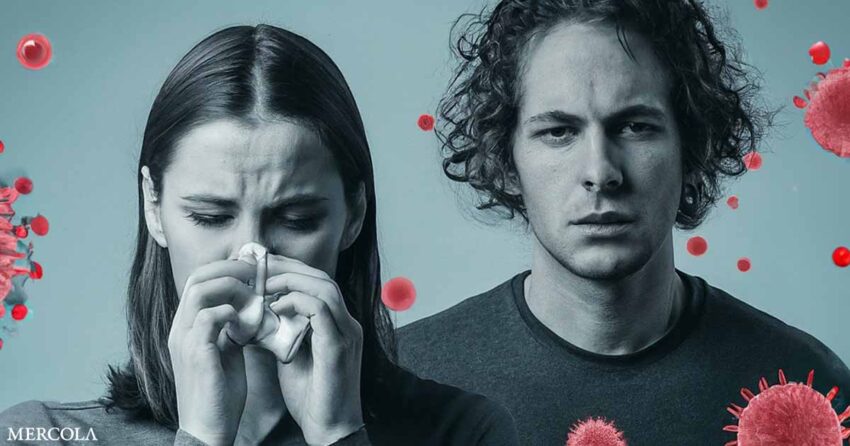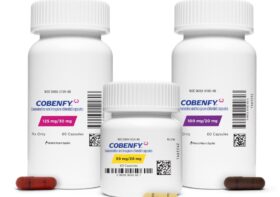Unraveling the Mysteries of mRNA Vaccine Shedding

After the COVID vaccines came out, we began to encounter more and more patients who had a compelling case history that suggested that were being repeatedly injured from being around recently vaccinated individuals.
For example, near the start of the vaccine rollout, a compelling (but hard to believe) story circulated online and as the year went by, we saw more and more patients who provided similar accounts to the one within this video:
This perplexed us as in theory, the mRNA vaccines (as they are not alive and hence do not replicate) should not be able to shed, but as time went forward, we kept on seeing more shedding cases which symptomatically improved once the patient’s shedding exposures were addressed. As a result, we’ve spent the last three years struggling to try to figure out what’s going on.
To help unravel this mystery, we recently put out a call for individuals to share their own shedding injuries and see if those accounts matched what we had observed. These is understandably a lot of interest in this subject (e.g., a Tweet about it received 555k views) and we’ve now collected hundreds of stories (which can be viewed here).
To briefly summarize what we have learned (which is discussed in much more detail in the previous article):
Although it is required by the FDA (and has been done for the other gene therapy products on the market), none of the COVID vaccines were ever tested for shedding. |
It has since been demonstrated that vaccine sheds in the breast milk and semen. There is also evidence suggesting but not proving the vaccine sheds in both the sweat and breath. It’s much less clear if it sheds in the stools. |
Individuals appear to be affected by being in proximity to a vaccinated person (particularly if they are quite close to them), by touching something a vaccinated person contacted (particularly bed sheets), and for particularly sensitive individuals, being in an area which had previously been densely occupied by shedders (conversely being outdoors, presumably due to airflow, reduces how much a shedder affects someone nearby). |
In most (but not all) cases, the effects of shedding will resolve once the affected individual simply stops being in contact with shedders. |
The susceptibility to shedding greatly varies person to person (with the majority not being affected by it). Those most sensitive to shedding are the “sensitive patients” (who often also have other conditions like fibromyalgia, Lyme or chemical sensitivities), those who have already been “sensitized” to the spike protein (demonstrated by them having either a vaccine injury or long COVID) and those who have a yet unknown susceptibility to the spike protein (which I believe is due to them being unable to effectively produce antibodies which neutralize the spike protein). Note: There were also a few cases of pets being affect by shedding which suggests the effects are not necessarily dependent upon a human receptor. |
Individuals are the most likely to shed immediately after vaccination or boosting (which leads to many sensitive individuals dreading the next boosting campaign). This tendency to shed appears to match the observed blood levels of spike protein which quickly rise following vaccination then drop, but never hit zero. In turn, the most sensitive individuals always notice if someone was vaccinated, while less sensitive individuals only get ill from people who had been recently vaccinated. |
Many individuals affected by shedding are able to identify clear reproducible patterns of when they get ill from shedding (e.g., each time they go to church on Sunday they get the same illness on Monday). |
Some people shed much more than others (e.g., individuals can frequently identify who at their church always makes them ill). Typically, younger people shed more than older people. Furthermore, sensitive individuals repeatedly notice certain characteristics of shedders (e.g., they have a distinct odor). |
The most common effect of shedding is abnormal menstrual bleeding (which can sometimes be very severe and frequently affects post menopausal women). Other common symptoms include nosebleeds, spontaneous bruising, tinnitus, rashes, headaches, reactivation of latent viruses (e.g., shingles), briefly coming down with a covid like illness, sinus issues and muscle pain. Some people experience a cluster of these symptoms while others only experience one or two of them. |
Individuals tend to notice an increasing duration of exposure to a shedder will make them feel worse. In turn, numerous readers have noticed that if they ignore their lighter symptoms (which often onset within minutes of a shedding exposure) and do not exit the situation, they will become severely ill for a prolonged period. |
Most of the shedding injuries appear to be a consequence of circulatory impairments (e.g., microclotting). I personally believe this is due their adverse effects on the physiologic zeta potential (which once treated appears to fix spike protein injuries) and to a lesser extent activating the cell danger response. |
Most of the vaccine shedding symptoms resemble what is seen in other spike protein injuries. However, there are two key differences. First, spontaneous bruising and nosebleeds are unique to shedding (they are not typically seen after long COVID or a vaccine injury). Secondly, the symptoms which emerge from shedding exposures tend to be less severe than the traditional spike protein injuries (e.g., heart issues or strokes are rarer and less severe) and when the severe effects occur (e.g., death), they are typically proceeded by less severe reactions to shedding (but unfortunately the victim continued to expose themselves to shedders). This suggests that the shedding reactions are being caused by reactions to a lower dose of spike protein — which is congruent with the fact a vaccinated individual will have more spike protein inside them than what is shed into their environment. |
Shedding effects are typically either immediate (e.g., nosebleeds, headaches and dizziness), onset in 6-24 hours (e.g., menstrual issues) or gradually show up over time. Note: None of these are absolutes (e.g., sometimes the nosebleeds take a day to manifest, whereas I found one case where someone had severe menstrual bleeding immediately after a shedding exposure). |
Two studies have validated the shedding effect is real. |
The majority of people do not appear to be affected by shedding. |
Mysteries of the Shedding Phenomenon
The previous facts understandably raise a lot of uncomfortable questions many want answers to (hence why we received so many replies). I personally believe they necessitate a federal law being passed which will prohibit any gene therapies from entering the market unless their shedding is properly evaluated, that data is made public and it can be proven it is feasible to prevent the general public from being shed on.
Given the gravity of this situation, we believe it critical to provide the most accurate and balanced assessment of the COVID vaccine “shedding” phenomenon. This in turn was why we put out a public call for as much information on it as possible and why we’ve been as transparent as possible in how we reached our conclusions and provided all the data we used that helped us reach this conclusion.
Since mRNA “shedding” is such an inexplicable phenomenon, attempts to explain or predict it inevitably result in a large number of highly speculative hypotheses being raised. In turn, it was my hope that consistent patterns would be seen in the shedding reports which could narrow down which of those hypotheses could fit the observed patterns and hence were more likely to answer many of the questions which have been repeatedly raised on this subject.
For the rest of the article as we attempt to untangle this mystery, I will share our current perspectives on what might be going on and the answers to the most commonly received questions on it.
The Vaccine Smell
One of the most surprising things I learned from exploring the shedding issue is how many people have reported observing a distinct smell from individuals who appear to shed [e.g., 1, 2, 3, 4, 5, 6, 7, 8, 9, 10, 11, 12, 13, 14, 15, 16, 17, 18, 19, 20, 21, 22, 23, 24, 25, 26, 27, 28, 29, 30]. Additionally, many also notice this smell is present in areas where many vaccinated individuals have been (e.g., after a booster rollout, in crowded public spaces, or inside cars they drove).
Overall, it appears that a higher spike protein load appears to be “easier” to smell (e.g., in someone recently vaccinated — as spike protein levels spike in the blood after vaccination, when in close proximity to a shedder particularly if some type of intimate contact occurred, or when around someone who for some reason has a greater degree of shedding).
Similarly, more sensitive people (who are typically more likely to be injured by the vaccines) are more likely to detect this smell (e.g., they can still smell it once the shedders are no longer physically present).
Note: Numerous readers reported being able to consistently tell if someone was recently vaccinated.
Additionally, I’ve found a few cases where:
• Secondary shedding could be smelled.
• A sexual partner lost their distinctive odor.
• At least one individual with a vaccine injury could smell the shedding on themselves. [e.g., 1, 2, 3]. I would like to quote what one of those individuals shared since I believe it may offer some vital clues for unravelling this mystery:
“The smell was one of the first symptoms of my vax injury (albeit a benign one, compared to what it eventually turned into). It was like my entire smell changed. I was living in Florida at the time — needless to say I’d sweat a lot. And every time, post-vax, my underarm sweat would have this strange metallic smell.
I would complain to my girlfriend about it. Always telling her ‘there’s just something off. I can sense it’ … at the time, she wasn’t picking up on it. Or she disagreed as to the nature of the smell, while begrudgingly agreeing there was a slight change (she thought I was overreacting; also, she is unvaccinated) … But then a friend pointed it out at a workout class when I was sweating heavily.
I’ve been on a number of therapies for over a year now. The smell comes and goes. When it comes, I know I’m in for a flare up. It seems the flare ups tend to come from shedding (both viral and synthetic shedding). I haven’t noticed the smell on others. Just myself. It makes me feel like I’m not me anymore, and that I’ve been hijacked.”
The labels I’ve seen used to describe the smell are as follows: “mild sickly sweet,” “rotting [or dying] flesh,” “magnetic onion,” “unpleasant,” “distinctive,” “the smell of death,” “medicines plus latrines,” “musty plus rancid,” “dead animal,” a “decomposing body,” “road kill,” “like ammonia but not as strong,” “sweet,” “sour stomach,” “elderly person as their flesh breaks down with age,” “a chemical flu smell,” “of seaweed,” “putrid,” “sweet meat,” “strange and metallic,” “sharp, pungent and toxic,” “horrible,” “unique odor,” “chemical,” “vinegar,” “subtle like a pheromone.”
Note: Bolded items were reported by multiple people.
From looking at this list of smells, a few things jump out at me:
• While it’s quite difficult to put into words something which has never been described before, the descriptions are fairly consistent with each other.
• One of the most well recognized consequences of the vaccination is accelerated aging, which appears to be reflected in this list.
• There may be two separate things people are smelling (the decomposing flesh vs. the metallic chemical). One theory which was proposed to me to explain the second smell is that it’s a result of micro-organisms in the environment that have been metabolizing all the chemicals that were used to (pointlessly) sterilize every surface through COVID-19 as one reader said it was first noticed in 2020 but dramatically increased in 2021.
• Individuals who can smell this will likely lose their attraction to shedders (as appealing smells are often the most important thing for sexual compatibility).
Note: One sensitive person who can perceive the shedding has shared that they’ve completely lost their attraction to vaccinated women for this reason.
• The one friend I have who can smell this (and a very perceptive colleague) reports that it appears to be being emitted through the pores. This is consistent with what some of the individuals (e.g., the one quote above) observed and the evidence suggesting the shedding occurs through the sweat since it contaminates sheets.
Since individuals often perceive the same environmental quality through different senses (depending on their primary sensory orientation is) I was also curious to see other ways the “quality” shedders had was described.
Since smell is intimately linked to taste, I expected those reports to resemble the smells. The three I received [1, 2, 3] did just that, describing it as: “you can taste the jabs … it’s metallic and unpleasant,” “can taste a metallic sensation,” “a dry acid feeling on my tongue.”
Quite a few people also reported feeling sensations from vaccinated individual [e.g., 1, 2, 3, 4, 5, 6, 7, 8, 9] and described them as follows:
“‘… noxious,’ ‘recently vaccinated people have a slime on their skin,’ ‘it was a feeling of repellent that made me want to get away as quickly as possible,’ ‘the bioelectric field around the person disappears,’ ‘their energy changes to a stainless steel sink sponge feel which is metallic and raggedy (which that reader believed represented neurologic damage),’ ‘illness and excitable energy,’ ‘a heavy air pressure and spatial fog weighing on my brain (which if not exited from will then create vertigo for that reader),’ ‘it makes our noses prickle,’ ‘half of my tongue went numb the next day,’ ‘their energy field has a physical sensation of ‘metallic’ of physical repulsion, or a greyness, black goo, and even a dullness of mind that I could see.'”
Note: The last commenter also noted they verified they could accurately predict who was vaccinated and that they noticed food prepared from vaccinated individuals was different.
As you might notice, these are somewhat congruent with the previously described smells and tastes. One sensitive physician I know who smells the odor (and seems to know more about it than anyone else I know) has shared the following with me:
They had previously had environmental sensitivities, which with work they were able to eliminate. |
Until those sensitivities were resolved, they would smell chemical residues on them when they got home which they then needed to clean off. |
In December 2020 (right after the rollouts began), they began to notice a new smell they’d never smelled before which lingered on them once they got home and they needed to clean off (e.g., with a shower) in order to be able to be comfortable at home (previously, while sensitive, they’d also needed to do this for everyday chemical exposures). |
Before long, this smell started emerging in public places (e.g., a store), but was by far the strongest in the hospital. Because this smell had not existed throughout the first year of the pandemic, they assumed it was linked to the vaccine. Presently, they believe the smell is the spike protein and something else in the vaccine. |
The smell gets stronger each time a new series of boosters is rolled out (as most of coworkers at the hospital likely receive it). |
This smell was much weaker in Southern Europe, suggesting either their vaccines were different, or the health of the average American caused them to shed differently. |
When the shedding smell is particularly strong, they experience temporary symptoms while around those individuals (e.g., pain in a part of the body). This for instance occurred after the most recent round of boosters. |
Many people who were vaccinated do not have this smell, which suggests many (as discussed in the previous article) received placebos. Unfortunately for my colleague, it is much higher in hospitalized patients (which suggests those who received the more potent vaccines were also more likely to be injured and hence hospitalized). Likewise, the more “real” doses someone received, the harder it is for my colleague to be around them. Note: Presently my colleague estimates around 50% of the population is truly jabbed, but in certain cases (e.g., in clinics for the elderly who are more likely to have been repeatedly boosted, this figure rises to 80%). Sadly, those with the most unusual or severe illnesses, they invariably muscle test (or smell) as having been “truly” vaccinated. The subject of “hot lots” has been a longstanding controversy. |
The mold.. |


